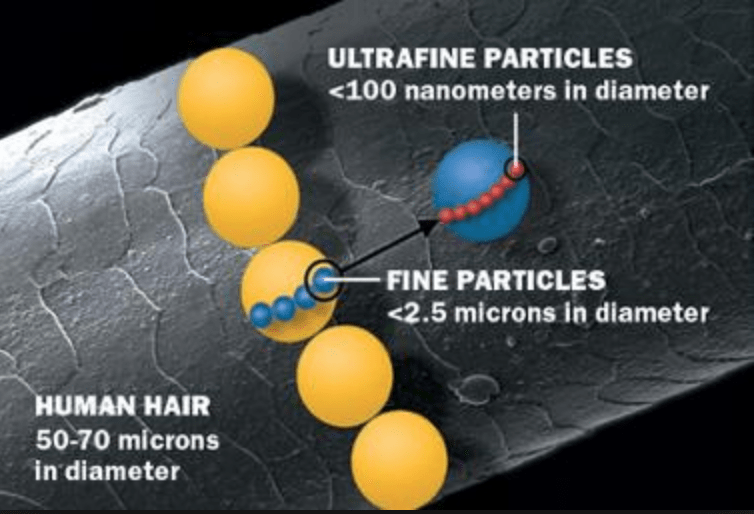According to the results of a study by the Clean Air Day campaign, air pollution in UK homes is more than three times worse than outdoor air pollution. The reason for this is the number of particles that form air pollution get trapped inside a home.
As many of us are still in lockdown or shielding, internal air pollution is even more of an issue than it ever has been. When we are all trying to stay healthy, your home may not be doing you any favours!
What did the study look at?
The study by the Clean Air Day campaign looked at the level of ultra-fine air pollution over a 24-hour period. It is thought that this pollution was a result of indoor activities such as cooking, or burning wood on inefficient wood burning stoves and open fires, alongside outdoor pollution from transport, which ends up moving inside a home.
Ultrafine Particles vs PM2.5 and PM10
 Ultrafine particles (UFP’s), mentioned in this article are seen to be potentially more dangerous than PM2.5 and PM10 due to their size. They are much smaller than both, which means they can more easily pass in to major organs of the body. Particles that are less than 100 nm (nano metre) in diameter are commonly defined as ultrafine.
Ultrafine particles (UFP’s), mentioned in this article are seen to be potentially more dangerous than PM2.5 and PM10 due to their size. They are much smaller than both, which means they can more easily pass in to major organs of the body. Particles that are less than 100 nm (nano metre) in diameter are commonly defined as ultrafine.
Ultrafine particles have the potential to have greater health impacts than PM10 or PM2.5, because they can be more easily absorbed into the body. Their tiny size means they behave together like a gas, are able to pass through the lungs into the circulation and get taken up into cells, where they cause potentially serious issues.
The Clean Air Strategy, published in 2019 raised awareness of how things like open fires can contribute to indoor pollution. Furthermore, the Clean Air Strategy highlights how only the cleanest stoves (Ecodesign Ready), which will come into force in 2022 will help tackle this problem. There is no place for open fires in a clean, environmentally friendly home.
Burning Wood Indoors:
Open fires are responsible for a lot of internal air pollution – although not at this time of the year. With a high efficiency wood burning stove, air is drawn from a room into a fire, to help with a clean, efficient burn. Unlike an open fire, the burning of the wood is not exposed to the internal atmosphere in a home. The combustion takes place in a sealed, glass fronted firebox, and vented into the external atmosphere. The only time the efficiently burnt wood would be exposed to the indoor atmosphere, would be momentarily when opening the door to add more firewood.
Covid19:
Covid19 Lockdown, Televisions with 100+ channels, games consoles, the Internet and generally more home-based activities, means people are spending longer in the home than ever before, this is especially true since March, when most of us were asked to stay at home. Apart from lockdown, which includes people of all ages it’s children, who are at risk from internal air pollution, as they are spending longer inside and less time outside playing. In a recent study, children spend just 7 hours a week outside and over twice that inside playing video games. This figure will be much higher due to lockdown.
.
How to Reduce In-Door Air Pollution:
.
- Avoid smoking in a home
- Reduce the use of harsh household cleaners
- Reduce or eliminate use of an open fire
- Open windows when possible
- Minimise air freshener use
- Make sure extractor fans are working correctly
- Avoid using scented candles
- Dust surfaces and vacuum frequently
Whilst some are needing to stay at home a little longer, it’s important that we are aware of in-door air pollution. This is especially true for those that are shielding, or have underlying health issues.